Introduction to computer
What is Computer?
Functionalities of a Computer
If we look at it in a very broad sense, any digital computer carries out the following five functions −
Step 1 − Takes data as input.
Step 2 − Stores the data/instructions in its memory and uses them as required.
Step 3 − Processes the data and converts it into useful information.
Step 4 − Generates the output.
Step 5 − Controls all the above four steps.

Advantages of Computers
Following are certain advantages of computers.
High Speed
Computer is a very fast device.
It is capable of performing calculation of very large amount of data.
The computer has units of speed in microsecond, nanosecond, and even the picosecond.
It can perform millions of calculations in a few seconds as compared to man who will spend many months to perform the same task.
Accuracy
In addition to being very fast, computers are very accurate.
The calculations are 100% error free.
Computers perform all jobs with 100% accuracy provided that the input is correct.
Storage Capability
Memory is a very important characteristic of computers.
A computer has much more storage capacity than human beings.
It can store large amount of data.
It can store any type of data such as images, videos, text, audio, etc.
Diligence
Unlike human beings, a computer is free from monotony, tiredness, and lack of concentration.
It can work continuously without any error and boredom.
It can perform repeated tasks with the same speed and accuracy.
Versatility
A computer is a very versatile machine.
A computer is very flexible in performing the jobs to be done.
This machine can be used to solve the problems related to various fields.
At one instance, it may be solving a complex scientific problem and the very next moment it may be playing a card game.
Reliability
A computer is a reliable machine.
Modern electronic components have long lives.
Computers are designed to make maintenance easy.
Automation
Computer is an automatic machine.
Automation is the ability to perform a given task automatically. Once the computer receives a program i.e., the program is stored in the computer memory, then the program and instruction can control the program execution without human interaction.
Reduction in Paper Work and Cost
The use of computers for data processing in an organization leads to reduction in paper work and results in speeding up the process.
As data in electronic files can be retrieved as and when required, the problem of maintenance of large number of paper files gets reduced.
Though the initial investment for installing a computer is high, it substantially reduces the cost of each of its transaction.
Disadvantages of Computers
Following are certain disadvantages of computers.
No I.Q.
A computer is a machine that has no intelligence to perform any task.
Each instruction has to be given to the computer.
A computer cannot take any decision on its own.
Dependency
It functions as per the user’s instruction, thus it is fully dependent on humans.
Environment
The operating environment of the computer should be dust free and suitable.
No Feeling
Computers have no feelings or emotions.
It cannot make judgment based on feeling, taste, experience, and knowledge unlike humans.
Computers can be broadly classified by their speed and computing power.
| S.No. | Type | Specifications |
|---|---|---|
| 1 | PC (Personal Computer) | It is a single user computer system having moderately powerful microprocessor |
| 2 | Workstation | It is also a single user computer system, similar to personal computer however has a more powerful microprocessor. |
| 3 | Mini Computer | It is a multi-user computer system, capable of supporting hundreds of users simultaneously. |
| 4 | Main Frame | It is a multi-user computer system, capable of supporting hundreds of users simultaneously. Software technology is different from minicomputer. |
| 5 | Supercomputer | It is an extremely fast computer, which can execute hundreds of millions of instructions per second. |
PC (Personal Computer)
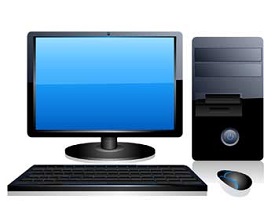
A PC can be defined as a small, relatively inexpensive computer designed for an individual user. PCs are based on the microprocessor technology that enables manufacturers to put an entire CPU on one chip. Businesses use personal computers for word processing, accounting, desktop publishing, and for running spreadsheet and database management applications. At home, the most popular use for personal computers is playing games and surfing the Internet.
Although personal computers are designed as single-user systems, these systems are normally linked together to form a network. In terms of power, now-a-days high-end models of the Macintosh and PC offer the same computing power and graphics capability as low-end workstations by Sun Microsystems, Hewlett-Packard, and Dell.
Workstation
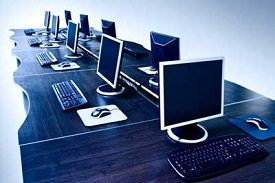
Workstation is a computer used for engineering applications (CAD/CAM), desktop publishing, software development, and other such types of applications which require a moderate amount of computing power and relatively high quality graphics capabilities.
Workstations generally come with a large, high-resolution graphics screen, large amount of RAM, inbuilt network support, and a graphical user interface. Most workstations also have mass storage device such as a disk drive, but a special type of workstation, called diskless workstation, comes without a disk drive.
Common operating systems for workstations are UNIX and Windows NT. Like PC, workstations are also single-user computers like PC but are typically linked together to form a local-area network, although they can also be used as stand-alone systems.
Minicomputer
It is a midsize multi-processing system capable of supporting up to 250 users simultaneously.
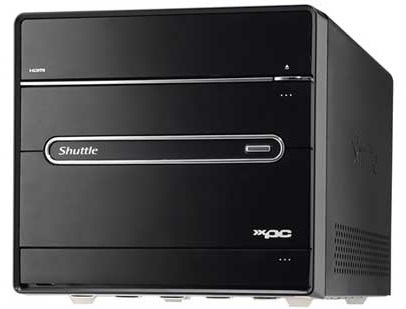
Mainframe
Mainframe is very large in size and is an expensive computer capable of supporting hundreds or even thousands of users simultaneously. Mainframe executes many programs concurrently and supports many simultaneous execution of programs.
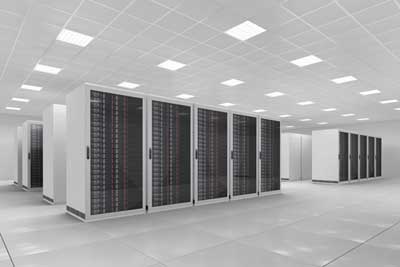
Supercomputer
Supercomputers are one of the fastest computers currently available. Supercomputers are very expensive and are employed for specialized applications that require immense amount of mathematical calculations (number crunching).
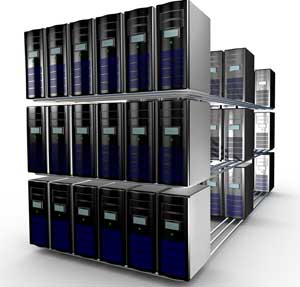
For example, weather forecasting, scientific simulations, (animated) graphics, fluid dynamic calculations, nuclear energy research, electronic design, and analysis of geological data (e.g. in petrochemical prospecting).
System of Computer:
All types of computers follow the same basic logical structure and perform the following five basic operations for converting raw input data into information useful to their users.
| S.No. | Operation | Description |
|---|---|---|
| 1 | Take Input | The process of entering data and instructions into the computer system. |
| 2 | Store Data | Saving data and instructions so that they are available for processing as and when required. |
| 3 | Processing Data | Performing arithmetic, and logical operations on data in order to convert them into useful information. |
| 4 | Output Information | The process of producing useful information or results for the user, such as a printed report or visual display. |
| 5 | Control the workflow | Directs the manner and sequence in which all of the above operations are performed. |
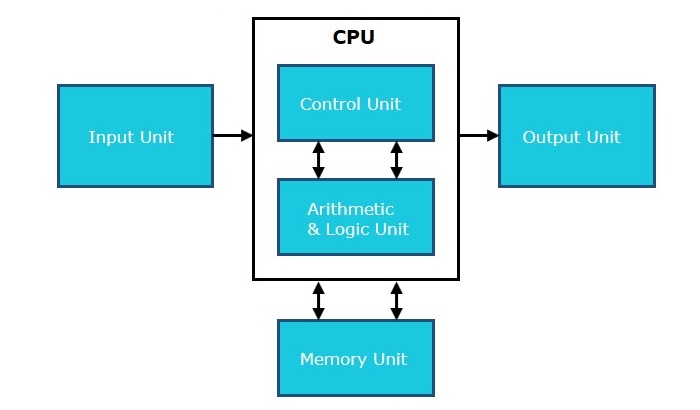
Input Unit
This unit contains devices with the help of which we enter data into the computer. This unit creates a link between the user and the computer. The input devices translate the information into a form understandable by the computer.
CPU (Central Processing Unit)
CPU is considered as the brain of the computer. CPU performs all types of data processing operations. It stores data, intermediate results, and instructions (program). It controls the operation of all parts of the computer.
CPU itself has the following three components −
- ALU (Arithmetic Logic Unit)
- Memory Unit
- Control Unit
Output Unit
The output unit consists of devices with the help of which we get the information from the computer. This unit is a link between the computer and the users. Output devices translate the computer's output into a form understandable by the users.
Comments
Post a Comment